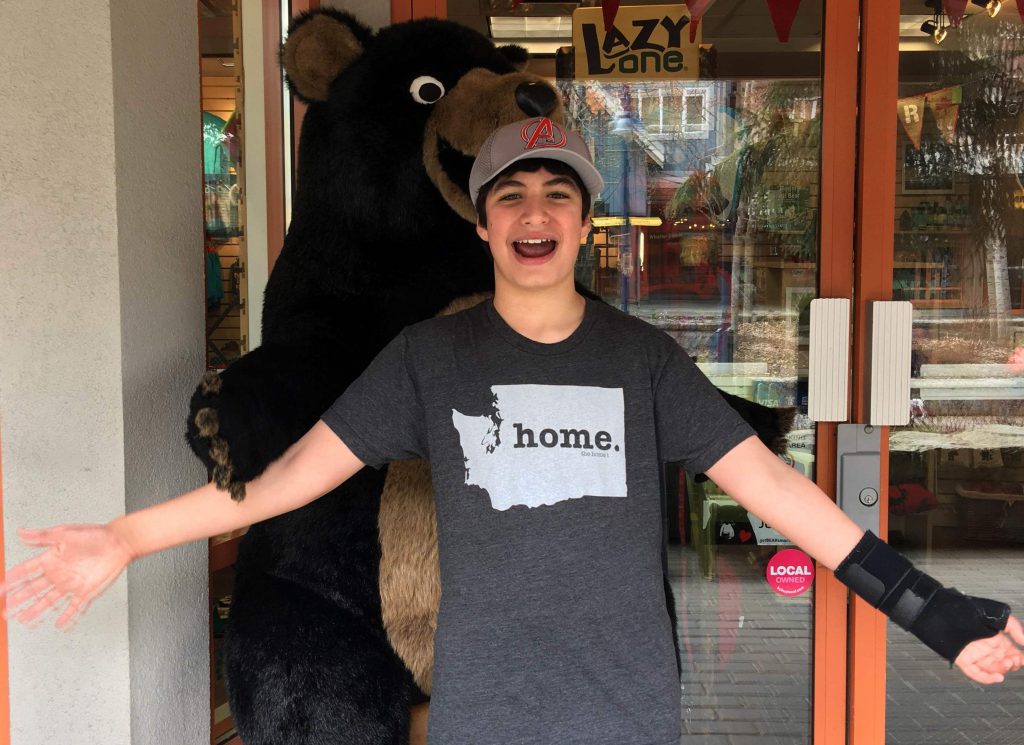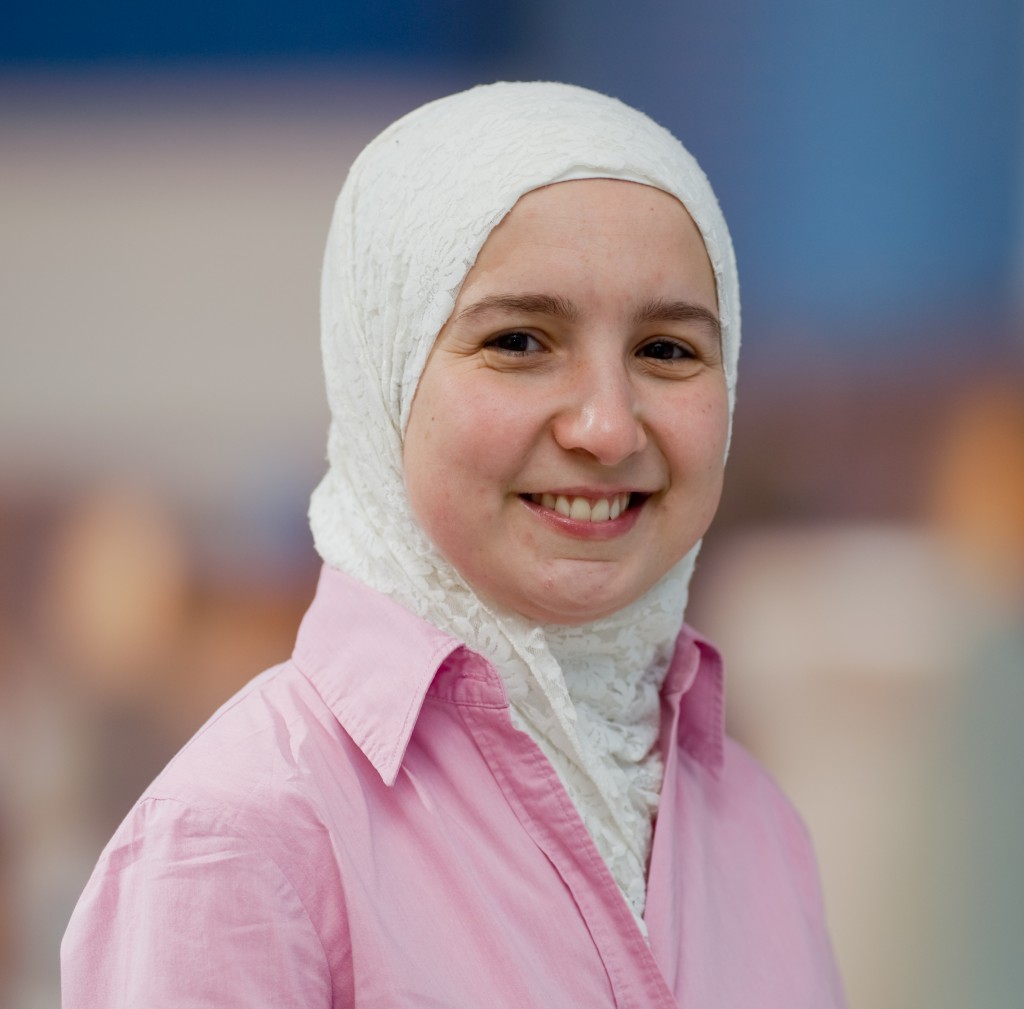
Alden Bernate, 12, is only a middle school student, but he’s already played a big part in groundbreaking epilepsy research. He donated brain tissue for scientific research after he had surgery to disconnect part of his brain that was causing severe seizures.
The human genetics team at Seattle Children’s Research Institute, led by Dr. Ghayda Mirzaa and Dr. William Dobyns, used Alden’s brain tissue along with the tissue from other patients to discover a new gene mutation that can cause intractable epilepsy. The finding opens the door to potential treatments that target that gene. The team’s findings are published in the current issue of JAMA Neurology.
50 seizures a day
Alden has bright brown eyes that shine when he smiles. But that wasn’t always the case. When he started having seizures at 3.5 months old, the light in his eyes dimmed. Alden was diagnosed with intractable epilepsy, a condition in which his seizures could not be controlled with treatment. Gabriela Bernate, his mom, said the seizures increased in frequency and intensity as he grew.
“His seizures increased to about 50 a day and he needed hospitalization to try to control them,” she said. “Alden was hospitalized five times for increased and uncontrolled seizures.”
The seizures lasted anywhere from 30 seconds to two minutes. During intense seizures, Alden would vomit and become extremely lethargic afterwards, and eventually he developed different types of seizures. He would fall asleep for hours after an episode.
“He gave up eating, so doctors placed a feeding tube,” she said. “He was in a constant fog and falling behind in physical, speech and language development. It was devastating.”
Doctors performed a video electroencephalogram to determine if surgery was the right path forward for Alden. After monitoring him for 24 hours, they found that Alden had 42 seizures in that time period and put him in a coma to stop the relentless seizures.
In consultation with the neurology and neurosurgery teams at Seattle Children’s, the family decided to proceed with surgery to disconnect the tissue between the right and left sides of Alden’s brain when he was 19 months old. Dr. Jeffrey Ojemann, Division Chief of Neurosurgery at Seattle Children’s Hospital, performed the procedure, called a hemispherectomy.
Just hours after surgery, Alden’s family saw clarity in his brown eyes—their boy was back.
“He was aware of his surroundings,” Bernate said. “We decreased medications and removed his feeding tube. He’s come a long way, and Alden has been seizure-free for over 11 years now.”
Discovering a gene that causes epilepsy

Mirzaa used Alden’s brain tissue and tissue from other neurosurgery patients to make an important discovery: She identified a gene mutation that can lead to abnormal brain development and epilepsy.
In the study published in JAMA Neurology, Mirzaa describes the new mutation that leads to focal cortical dysplasia, a common cause of intractable epilepsy. Alden’s seizures had been caused by focal cortical dysplasia.
“We work to find the genetic causes of focal cortical dysplasia and other developmental brain disorders,” Mirzaa said. “If we can identify a gene that’s causing epilepsy, we can potentially target that gene with a drug or other treatment.”
With intractable epilepsy like Alden’s, sometimes neurosurgery is the only option to offer relief. But surgery can be hard on patients and families and has a significant recovery time.
“Surgery provided relief but it’s extremely invasive,” Bernate said. “After surgery, Alden needed many years of extensive speech, occupational and physical therapies.”
Mirzaa hopes that research will advance treatments so doctors can target genes that are causing epilepsy.
“We hope to increase treatment options that are individualized to a patient’s specific underlying cause,” Mirzaa said. “Perhaps we can turn the gene’s activity down with a drug. In fact, there might already be drugs that can do that, and this research helps connect those dots.”
A brighter future for epilepsy research

When Alden found out that a piece of his brain had been used in Mirzaa’s discovery, a big grin came over his face.
“That’s pretty cool that it was my brain they used,” he said.
Alden is healthy and no longer suffers from seizures. He earns medals on the Special Olympics Swim Team and enjoys hiking. He’s catching up academically and is a member of the National Junior Honor Society. Alden still comes to Seattle Children’s for follow-up care with neurologist Dr. Russell Saneto.
His family is proud of the progress he’s made, but they’ll never forget the hard days they went through.
“I remember vividly thinking that not in my lifetime will they find a cause for my son’s debilitating and heartbreaking condition,” Bernate said. “Here we are 11 years later and they have a cause. The pain we suffered has not gone in vain and we are thrilled that we have had a small part in this scientific discovery.”
The close coordination between the neurosurgery, genetics and neurology teams at Seattle Children’s Hospital and Seattle Children’s Research Institute made the research possible. The team included Dr. Ghayda Mirzaa, Dr. William Dobyns, Dr. Jeffrey Ojemann, Dr. Edward Novotny, Dr. Russell Saneto, and Dr. Robert Hevner.
Resources
- JAMA Neuro study
- Dr. Ghayda Mirzaa, Seattle Children’s Research Institute
- Neurosurgery, Seattle Children’s Hospital
- Genetics, Seattle Children’s Hospital
- Epilepsy, Seattle Children’s Hospital

